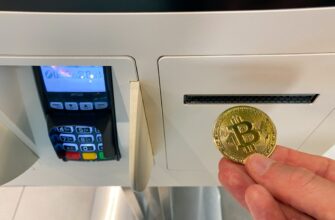Unlocking the Potential of ZK Airdrops
ZK airdrops represent one of crypto’s most exciting opportunities, offering early adopters free tokens from cutting-edge zero-knowledge proof projects like zkSync, Starknet, and Polygon zkEVM. With Layer-2 networks gaining massive traction, qualifying for these airdrops could yield significant rewards—as seen with Arbitrum’s $ARB distribution worth thousands to active users. This guide breaks down actionable strategies to position yourself for future ZK airdrops while avoiding common pitfalls.
What is a ZK Airdrop?
A ZK airdrop distributes free tokens to users who’ve interacted with zero-knowledge (ZK) rollup networks. These Layer-2 solutions bundle transactions off-chain using advanced cryptography before settling on Ethereum, drastically reducing fees and increasing speed. Projects use airdrops to:
- Decentralize token ownership
- Reward early testers and supporters
- Boost network adoption and liquidity
- Create community governance participants
Step-by-Step Guide to Qualify for ZK Airdrops
- Set Up Your Foundation
- Create a non-custodial wallet (MetaMask, Rabby)
- Fund with ETH for gas fees ($50-$100 recommended)
- Never share seed phrases or connect to suspicious sites
- Bridge Assets to Target Networks
- Use official bridges: zkSync Bridge, StarkGate, Polygon zkEVM Bridge
- Transfer ETH/USDC (even small amounts count)
- Complete round-trip transactions (bridge in and out)
- Generate Meaningful Activity
- Swap tokens on native DEXs: SyncSwap (zkSync), JediSwap (Starknet)
- Provide liquidity in pools (aim for $50+ for 30+ days)
- Mint NFTs on ZK-powered marketplaces
- Interact weekly—consistency matters more than volume
- Engage with Ecosystem dApps
- Use lending protocols like zkLend (Starknet)
- Participate in governance on snapshot.org for ZK projects
- Complete testnet tasks if available
- Maintain Wallet Health
- Keep assets in-wallet for months (no rapid withdrawals)
- Avoid Sybil behavior—don’t create multiple wallets
- Track activity with chain explorers like zksync.io
Pro Tips to Maximize Eligibility
- Diversify Networks: Spread activity across zkSync Era, Starknet, Scroll, and Polygon zkEVM
- Follow Official Channels: Join Discord/Twitter for project updates
- Time Your Activity: Prioritize networks nearing token launches (e.g., zkSync’s ‘ZK’ token rumors)
- Document Transactions: Save proof of early interactions
Critical Mistakes to Avoid
- ❌ Using centralized exchanges instead of self-custody wallets
- ❌ One-time interactions without sustained engagement
- ❌ Ignoring small-fee transactions (even $1 swaps count)
- ❌ Falling for phishing sites impersonating airdrop claims
ZK Airdrop FAQ
Q: When will the next major ZK airdrop happen?
A: zkSync is widely anticipated to launch its token in 2024, while others like Scroll could follow. Dates are rarely announced in advance.
Q: How much money do I need to qualify?
A: You can start with under $50. Focus on transaction frequency, not value. Gas fees cost pennies on ZK chains.
Q: Can I use multiple wallets to increase chances?
A: Avoid this. Projects use Sybil detection to filter duplicate users, which may disqualify you.
Q: Are ZK airdrops taxable?
A: Yes, in most jurisdictions. Treat them as income at fair market value upon receipt.
Q: How do I stay safe from scams?
A: Never pay to “claim” an airdrop. Legitimate distributions require no upfront fees. Verify all links via official project social media.
Q: Do past interactions count if I stopped using the network?
A> Possibly—many projects snapshot historical activity. Resume activity immediately to cover all bases.
Final Thoughts
Qualifying for ZK airdrops demands consistent, genuine engagement with Layer-2 ecosystems. By bridging assets, trading on native DEXs, and participating weekly, you position yourself for potential windfalls. Remember: decentralization champions real users, not opportunists. Stay vigilant, engage authentically, and let zero-knowledge proofs work their magic on your portfolio.








